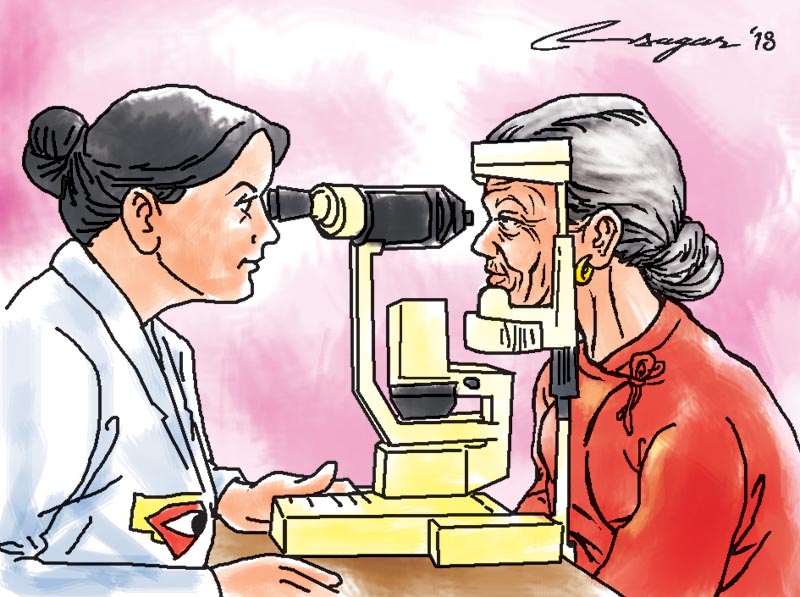Diabetic eye disease preventable
Kathmandu, December 29
As the number of diabetic patients in the country continues to rise, retina specialists have suggested that an early detection and treatment of retinopathy prevents most cases of vision loss.
Diabetic retinopathy, also known as diabetic eye disease, is a medical condition in which damage occurs to the retina due to diabetes. High blood sugar level damages and blocks retinal blood vessels.
“Among 100 patients visiting the Retinopathy Department at Tilganga Institute of Ophthalmology, at least 50 of them have diabetic retinopathy,” said Dr Raba Thapa, retina specialist and associate professor at TIO.
“Patients visit hospitals only when they have eye problems. However, diabetic retinopathy often has no symptoms at its early stage. Blurred vision, fluctuating vision, swelling of retina are some of the symptoms of diabetic retinopathy that manifest at later stage. The only way to prevent complications of diabetic retinopathy is early screening. Anyone diagnosed with diabetes must get their retina tested immediately,” she said.
Those with family history of diabetes, above 30 years of age, living a sedentary lifestyle and those consuming refined food are under the risk of diabetes.
“Once a person is diagnosed with diabetes, s/he should get retina tested. Retina test should be done at least once a year or upon the advice of the doctors,” Dr Thapa added.
In a project completion meeting organised by Tilganga Institute of Ophthalmology, Dr Thapa disseminated findings of the project. The project was titled ‘Integration of Diabetic Retinopathy Eye Care Services within Comprehensive Diabetes Management of General Public Health System in Nepal (2016-2019).’ “We were able to bring a national guideline for management of diabetic retinopathy in Nepal. Health practitioners were trained across the country and over 20,000 persons were tested for diabetic retinopathy during the project period. Also awareness on diabetic retinopathy was spread and medical equipment were distributed to health centres for diabetic retinopathy treatment during the project,” she said.
Diabetes mellitus is the second most prevalent non-communicable disease (8.5 per cent) after chronic obstructive pulmonary disease (11.7 per cent) across the country, according to the Nepal Health Research Council report.
“People with anaemia, uncontrolled blood pressure, diabetes, high cholesterol and those with smoking and drinking habits should get their eyes tested regularly,” Dr Thapa said.






